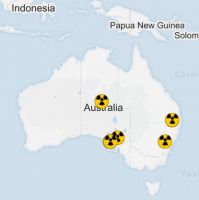Map: Six sites in Australia short-listed for a nuclear waste dump.
By Tom Maddocks
A doctor from Alice Springs has driven almost 10,000 kilometres to visit all six sites shortlisted for Australia's first nuclear waste dump. Hilary Tyler and fellow activist Meret MacDonald spent six weeks on the road, speaking to communities in the Northern Territory, South Australia, New South Wales and Queensland. With a four-wheel drive and a basic camera, the pair documented their trip across the remote land where the Federal Government is planning on storing low-level and intermediate nuclear waste.
Both have been involved in the campaign against one of the proposed sites — a date farm south of Alice Springs.
Dr Tyler said they decided to do the "grand tour" because it was a national issue.
"It was really interesting to talk to everybody because they're worried about the same thing that people in Alice Springs are worried about," Dr Tyler said.
"They're worried about the really shonky process that the Government's pursuing. People are worried everywhere about water. Australia is a dry country."
At Kimba, one of the three proposed sites in South Australia, dryland farmers said they were concerned about potential impacts on the agricultural industry.
"Through all this process it's the wellbeing of our community, that's the biggest concern at the moment," farmer Peter Woolford said.
"That has to be considered well in front of money."
It was a similar feeling among residents at Oman Ama in southern Queensland, where some have been told the value of their land will plummet.
"If those land values drop, the mortgage will be worth more than the land and that's a tremendous worry to our community," said local doctor Colin Owen, who runs an organic olive farm in nearby Inglewood.
A number of Oman Ama residents said there was a level of anxiety in the community, particularly among those who did not understand radioactive waste management.
"I'm really worried about the general angst and the conflict and the suspicion that I note in the community, where some people feel as though someone else might be for it or against it," said Sue Campbell, a mental health nurse who lives on a property neighbouring the site in Oman Ama.
Another proposed site at the historic gold mining village of Hill End in New South Wales' Central West was ruled out due to community opposition.
Bruce Wilson, the head of resources in the Department of Industry, told a public meeting the Government had no intention of building a waste facility if there was no local support.
"We clearly don't want it, we're an unsuitable site," resident Jodie Carter said.
"It's very treacherous roads to get into the place. The town itself is mostly owned by national parks and wildlife service and it's heritage listed."
"Don't dump toxic shit on us!!!" is spray painted on a road at Hill End.
The Federal Government has promised extensive community consultation ahead of the final decision on the single location by the end of this year.
Government representatives will return to Central Australia next week to talk to the public about the proposed site south of Alice Springs.
They will take the media on a tour of the proposed site at Hale on Monday and will hold a meeting in the nearby community of Titjikala and then in Alice Springs on Tuesday.
"The Government has said that if there is community opposition then they won't put it there, so there's huge community opposition everywhere so if the Government sticks to its word then they will withdraw," Dr Tyler said.
She said people would continue to fight against the plans.
What nuclear waste will be stored?
Low-level waste
• Emits radiation at levels that generally require minimal shielding during handling, transport and storage
• Examples include paper, plastic, gloves, cloths and filters which contain small amounts of radioactivity
• Could include items, such as test tubes, that have come into contact with nuclear medicine
Intermediate waste
• Emits a higher level of radiation and requires additional shielding
• Generated from radiopharmaceutical production and reactor operations
• For example, steel rods that come from the reactors
Source: Australian Nuclear Science and Technology Organisation

